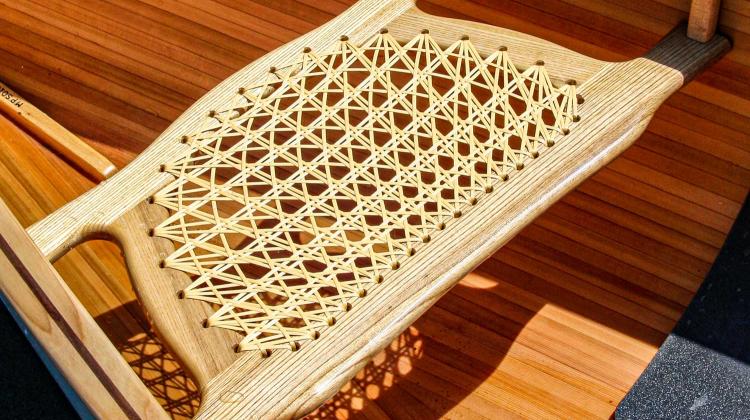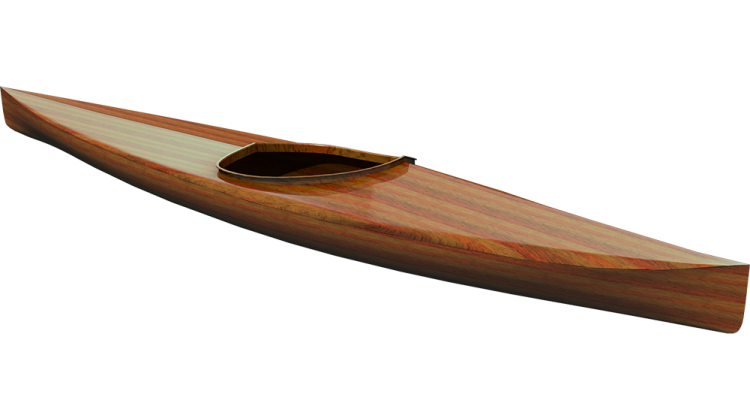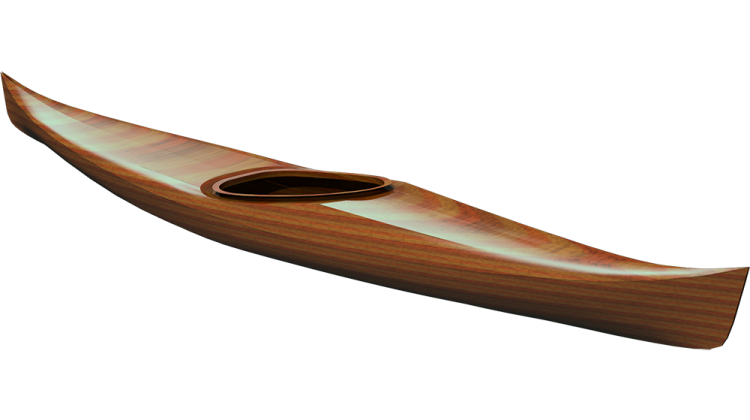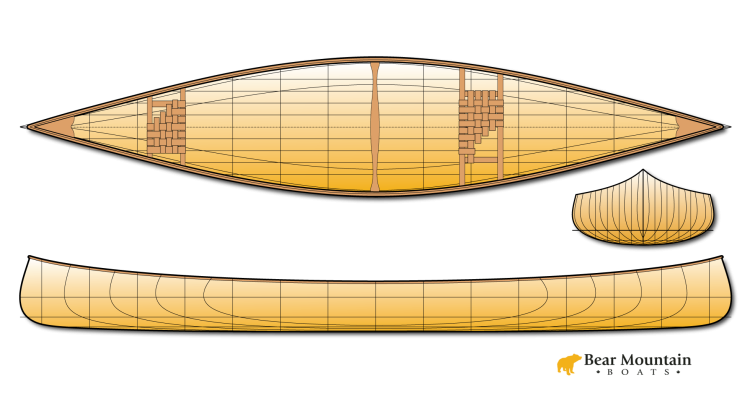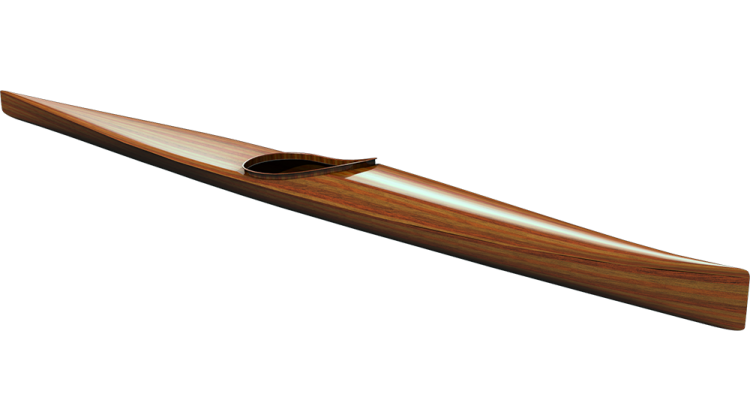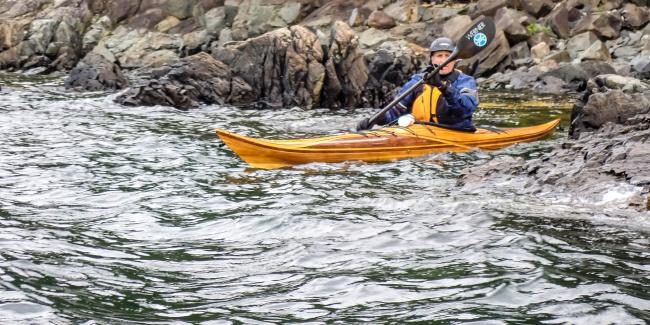Transcript
Hi, I'm Nick Schade at Guillemot Kayaks. Welcome to the 10th episode of my series on building the Petrel Play.
In the last episode I glassed the hull. In this episode I'll glass the deck, but before that I need to give it a final sanding, when I'm done glassing I'll apply a heavy fill coat.
After the epoxy has cured on the hull it is a bit stuck to the forms. I work around the perimeter pulling the shell of the boat away from the forms. The fiberglass has already added a lot of strength and the hull can flex quite a bit without breaking.
With just one layer of glass on the hull it weighs almost nothing and is easy to lift off the forms.
Before glassing the hull I had temporarily removed the deck and placed it aside so epoxy wouldn't drip on it. Now that the hull has one layer of glass I flip the forms back over and put the deck back in place.
A little hot melt glue secures the deck to the forms and holds it in shape.
Back in Episode 7 I did an initial sanding on the deck and in Episode 8 I installed the recess. Now I need clean up the transition into the recess and do the finish sanding.
A long board levels out any slight waves in the surface that may have been created by the random orbital sander. It also removes any cross-grain scratches the power sander made.
I then go over the whole surface again with 120 grit sandpaper using a random orbital with a small orbit for a finer finish. A soft contour adapter pad between the sanding disk and the power sander helps conform to the surface.
I use the same back-and-forth followed by up-and-down sanding pattern I described in episode 7. Moving slowly, overlapping about 50% each pass while working in two different directions assures that the whole surface gets sanded evenly.
It is inevitable that with all the sanding that some of the stain on the cockpit recess is removed. To fix it I start by masking off the areas I don't want any stain.
In this case there is a fine pin-stripe between the recess and the rest of the deck that needs to be covered.
I apply another coat of stain to the spots that need it and then wipe the whole surface down with alcohol to blend the colors together.
The masking tape can come off immediately.
As soon as the stain is dry, I roll out the fiberglass cloth. It would be best if I had some help and could hold up the cloth off the boat while I rolled it out, but I work alone, so its easiest to support the roll on the boat.
Since this is a narrow roll of cloth, I just cut it off to length. I could save some material by laying the cloth on slight diagonal and nest the next cut in beside the end, but again working alone, this is easier.
The recessed coaming is a little difficult for the glass to conform to. By making some cuts in the cockpit area I can relieve most of the tension in the yarns that might prevent a smooth fit.
I always want to start applying the epoxy resin where the cloth will have the hardest time conforming to the surface. Dry cloth can be fairly easily distorted to drape smoothly, once it is wet with epoxy it is harder to warp the weave around complex shapes.
I dab the brush on to the surface to push the cloth down into the contours while transferring resin on to the layup. Wiping the brush at the point would pull tension into the yarns and possibly causing them to lift up off the recessed area.
I'm not trying to get the cloth wholly wet out with the brush. I am really just using the brush to get some resin from by mixing bucket on to the boat and start to stick the cloth where I want it. Once the epoxy is out of the bucket and on to the boat, I use my squeegee to distribute that resin around.
Once I've completely wet out around the cockpit area, right down to the sheer, I am ready to move on.
I can just pour out a puddle of resin and use my squeegee to move that epoxy around.
I work the squeegee from wet towards dry, in this way I pull the cloth tight and transport any wrinkle out towards the dry cloth or even better, off the edge of the boat.
With the tip of the squeegee I grab enough resin to fill where I'm working. Holding the it at about a low 20° angle with light pressure, I pull puddle of resin along, allowing it to soak into the fabric as I go.
To move resin farther distances over saturated cloth, I will increase the angle up to 45° to hold the resin as I pull, until I get to a dry spot where I lower the angle to help push it into the weave.
In this initial wet out I like to leave everything a bit over saturated where I can see some shiny puddles. This allows the wood to sponge up extra resin and reduces the chances of starved spots later.
Since I was quick about getting the initial wet out complete, I have plenty of time to come back and do the grunge cup. Holding the squeegee at a 45° angle with the sharp edge down and moderate pressure, I press the cloth down and pull off the excess resin to be disposed of by dragging the edge through a slot in the paper cup.
Once I've cleaned up all the drips and the cloth has a uniform matt finish with the weave texture clearly showing I let it cure for several hours, until the resin has set enough to hold the cloth firmly to the deck but still soft enough to promote a full chemical bond. Then I apply a fill coat.
Unlike in the previous episode with the hull, where I applied a light coat in preparation for another layer of cloth, on the deck I want to start it towards its final, smooth, shiny finish. This implies a fairly heavy fill coat.
The key to applying a lot of resin quickly without making a drippy, saggy, mess, is creating a uniform film thickness. To achieve this I work systematically on small areas at a time.
Since I used staples when installing the strips, I have a series of one foot sections defined. Dipping the brush deeply into my mixing pot I pull out fully laden brush. This epoxy is spread onto the surface with firm horizontal strokes back and forth between staple marks. Refilling the brush as needed.
I then switch to lighter vertical strokes from sheer to center line to even out the coat, pulling thicker spots to thinner spots.
The final step is gentle tipping strokes pulling from dry towards wet that pop bubbles and lift off excess resin.
With that section complete I move on to the next one foot section and repeat the 3-step process.
While it may seem exceedingly dangerous to take a blow torch to your fresh coat of epoxy, it's a great way to eliminate bubbles. The heat of the torch lowers the viscosity of the resin surface briefly and expands any trapped air to the point where the bubbles pop and disappear. The resin just isn't that easy to burn.
The cloth is applied and wet out and the fill coat is complete, now I'll just let it cure overnight.
In the next episode I will build the coaming, until then if you have any questions I would like to hear them. Please subscribe to my channel to be notified of future episodes and hit like if you are learning from these videos.

